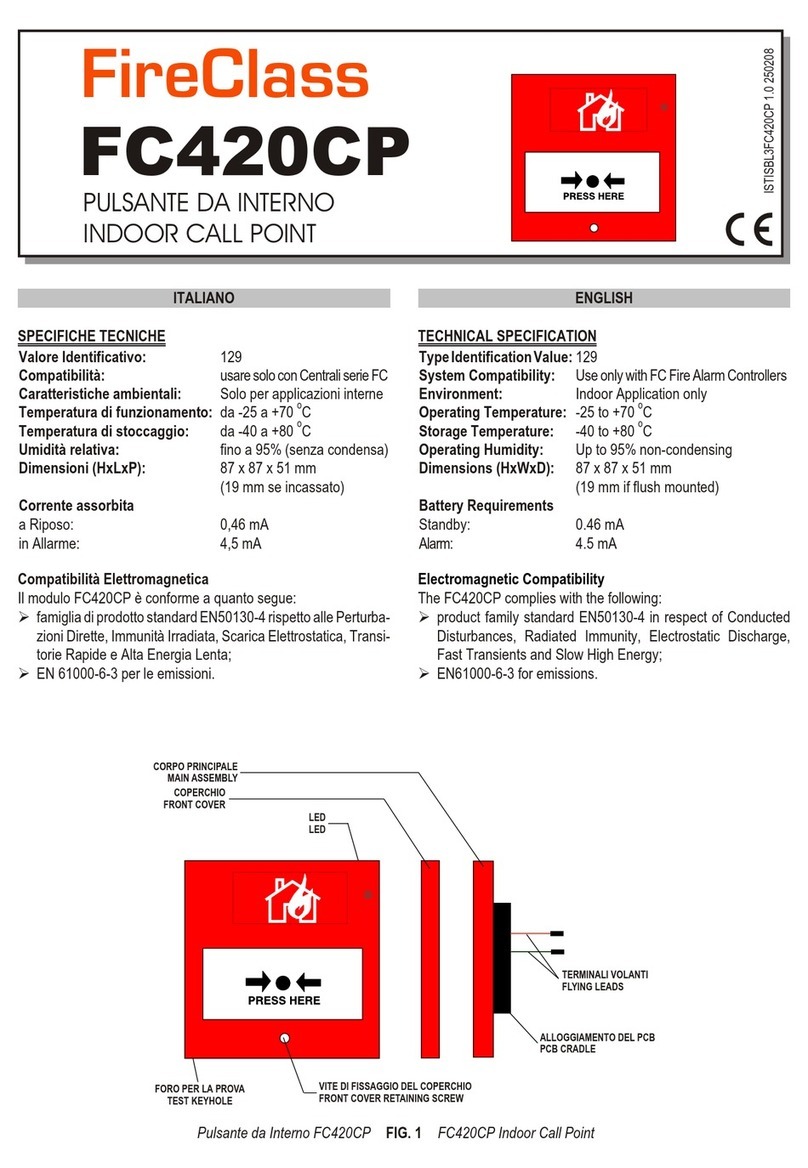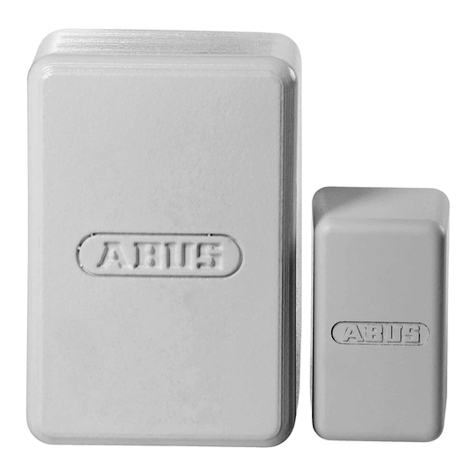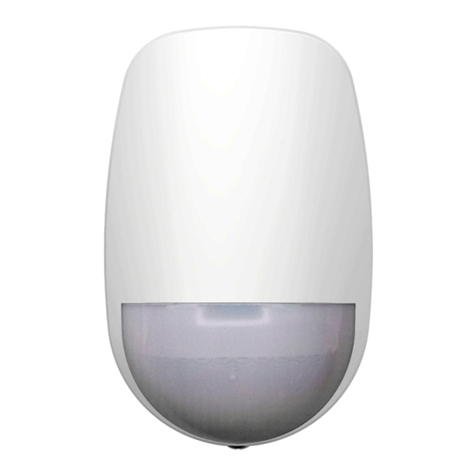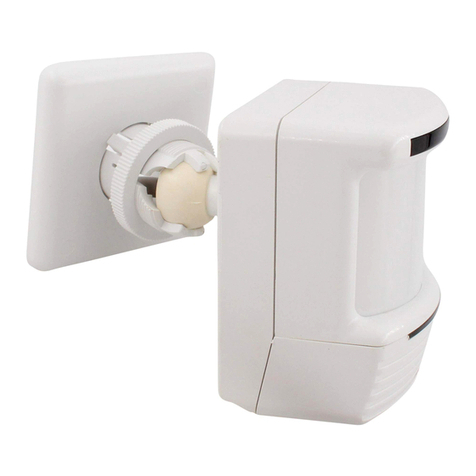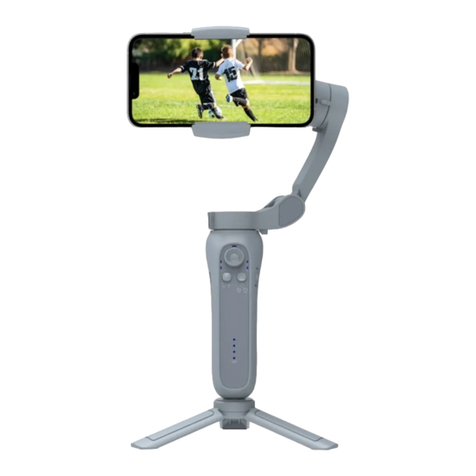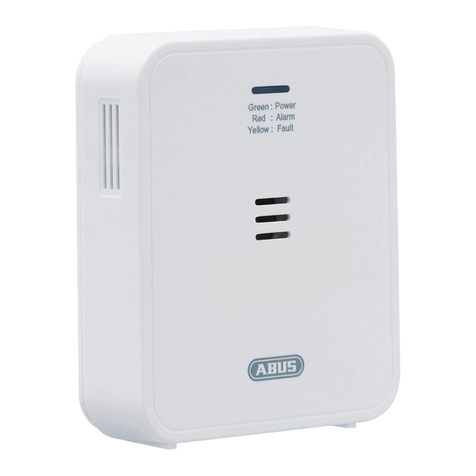FireClass FC400CH User manual

Product application & Design information Doc. version 1.0 14 February 2012 3
FireClass FC400CH Addressable carbon monoxide + heat detector
2.3.2 HEAT
Refer to Fig. 3.
The negative temperature coefficient thermistor produces an analogue output
which is fed to an analogue input on the communications interface.
2.4 COMMON CIRCUIT
Refer to Fig. 3.
Communications between the controller and detector uses the Frequency Shift
Keying (FSK) method. The ‘Discrimination Circuit’ filters the FSK signal from the
+ve line voltage and converts it to a digital square wave input for the ‘Communica-
tions ASIC’.The ‘Communications ASIC’ decodes the signal and when its own ad-
dress is decoded, the analogue inputs received from the carbon monoxide and
heat sensing elements are converted to corresponding digital values. These digital
values are then passed to the ‘Tx Driver Circuit/Current Sink’ which converts them
to FSK signals and applies them to the +ve line for transmission to the controller.
The Common Circuit is also used to:
ØControl Sounder and Relay bases via the ‘Functional Base Interface Circuit’
from controller commands.
ØControl the operation of the Remote LED via the ‘Remote LED Circuit’ from con-
troller commands.
2.5 WIRING
Loop cabling is connected to base terminals L (-ve) and L1 (+ve). A drive is pro-
vided for a remote indicator connected between loop positive and terminal R. Ter-
minal L2 (FUNCTIONAL BASE output) is for use with functional sounder base.
3. MECHANICAL CONSTRUCTION
The major components of the detector are:
ØBody Assembly
ØPrinted Circuit
ØCO Cell
ØScreening Can
ØCO Closure
ØThermistor
ØLight Pipe
ØOuter Cover
3.1 BODY ASSEMBLY
The body assembly consists of a plastic moulding which has four embedded de-
tector contacts which align with contacts in the base.The moulding incorporates
securing features to retain the detector in the base.
The CO cell is inserted onto the PCB followed by the screening can.
Four PCB mounted spring contacts provide electrical connection between the de-
tector contacts and the PCB.
The light pipe is slotted into the CO closure which is then clipped to the body. Fi-
nally, the outer cover is clipped to the body.
1. INTRODUCTION
The FC400CH carbon monoxide plus heat detector forms part of the 400 Series Ad-
dressable Fire detectors.
The detector is intended to plug into the following:
Ø5B 5” Universal Base.
ØFC450IB 5” Isolator Base.
ØFC430SB Low Power Sounder Base.
The detector is designed to transmit, to a remote FireClass fire controller, digital
signals which represent status of the carbon monoxide and heat elements of the
detector.
Software within the controller is used to interpret the returned carbon monoxide
and heat values to raise alarm or other appropriate response according to the type
of detector configured in FireClass Console.
The mode of the detector may be:
§Heat only detector (A1R or A2S).
§Carbon monoxide only detector (sensitivity: High, Normal or Low).
§Compensated carbon monoxide detector (sensitivity: High, Normal or Low).
§Compensated carbon monoxide (sensitivity: High or Normal) combined with
heat (A1R).
+Note:
ØThe heat detection grades are to EN54-5.
ØNormal and High sensitivity settings have been approved by the Loss Preven-
tion Council Board.
1.1 DAY/NIGHT SWITCHING
Two modes of detector operation are selectable from the list of possible modes as
follows:
Ø‘Normal’ mode, ie night time operation in which the detector will be evaluated
most of the time.
Ø‘Day’ mode in which the detector can be switched under certain circumstances,
eg during daytime when the building is occupied with people being able to de-
tect a fire manually. Switching to the ‘daytime’ mode can be done either by or
time driven.
1.3 SENSITIVITY SWITCHING
In addition to mode switching, the sensitivity can be changed within the actual
mode.This can be done either by PC programming or be time driven (eg,
day/night switching). Changing the sensitivity is done by shifting the sensitivity
up or down.
2. OPERATING PRINCIPLE
2.1 CARBON MONOXIDE
2.1.1 SENSING CELL
The CO element of the detector uses an electrochemical cell to detect the build up
of carbon monoxide generated by fires. The cell operates by oxidising carbon
monoxide on a platinum sensing electrode. Whilst on a corresponding counter
electrode the reduction half of the reaction takes place. The Sensing Cell is repre-
sented diagrammatically in Fig. 2.
When this reaction takes place the potential across the cell tries to change and this
causes a current to flow within the circuit around the cell. The current is mirrored
into a current to voltage conversion circuit with the resulting output directly propor-
tional to the carbon monoxide concentration.
The cell itself has a diffusion limiting component to ensure that all carbon monox-
ide in the area proximate to the sensing electrode is continuously oxidised. This
means that the rate of transport of carbon monoxide to the cell is directly propor-
tional to the external concentration and independent of air-speed.
2.2 HEAT DETECTOR
The heat element of the detector uses a single thermistor to produce an output propor-
tional to temperature. Rate of change of temperature is determined by the controller by
using differences between consecutive temperature values returned to the controller.
2.3 CIRCUIT DESCRIPTIONS
2.3.1 CARBON MONOXIDE
Refer to Fig.3.
The current through the cell circuit is added to a fixed baseline voltage and mir-
rored by the current mirror. This is fed to a current to voltage converter amplifier
which buffers and scales the signal. The resultant voltage is fed to an analogue in-
put on the common circuit.
ENGLISH
FC400CH Addressable Carbon Monoxide + Heat DetectorFIG.1

4 Product application & Design information Doc. version 1.0 14 February 2012
FC400CH Addressable carbon monoxide + heat detector FireClass
4.5.1.2 EFFECT OF AIRFLOW ON SENSITIVITY
The signal status of the FC400CH detector has been specifically designedto be in-
sensitive to abnormal air velocities. The effect of normal air velocities upon sensi-
tivity is negligible.
4.5.1.3 EFFECT OF TEMPERATURE ON SENSITIVITY
The carbon monoxide detector incorporates temperature compensation and its
condition current will be substantially constant over its specified operating range.
4.5.1.4 EFFECT OF ATMOSPHERIC PRESSURE ON SENSITIVITY
The sensitivity of the detector is not effected by changes in atmospheric pressure
unless they happen very quickly ie explosions.
4.5.2 RESPONSE TO FIRE TESTS
The response of the FC400CH carbon monoxide detection element of the detector
to real or large-scale test fires will be dependent on the detection mode chosen
and the sensitivity set in the control unit.
Other factors however, such as the rate of development of the fire, and relative ox-
ygen supply are also important. The fire tests defined in prEN54 pt. 7 which are in-
tended for ionisation and optical detectors are less appropriate for carbon
monoxide fire detectors as their design means that they produce significant levels
of carbon monoxide only in their later stages.
However, the FC400CH using compensated carbon monoxide combined with
A1R heat (sensitivity High and Normal) mode, pass all tests laid down in prEN54 pt
7 including the fire tests.
4.5.3 HEAT DETECTOR
4.5.3.1 GENERAL
The performance of heat detectors is defined in European Standard prEN54-5.
5. DETECTOR ADDRESS
The loop address of the detector is held in internal E2PROM which is pro-
grammed from the FC490ST Address Programmer.
+Note: this device use one address only on the loop.
6. ADDRESS FLAG
Refer to Fig.6. The address flag is used to identify the address and zone of the de-
tector.The address flags are supplied in one of two packs (address 1 - 127 or
128-255 , with a different colour for each loop) and are ordered separately from the
detector.The address flag is fitted to the bottom of the detector. When the detector
is fitted to the base and turned until fully located the address flag is then transferred
to the base. If the detector is removed from the base, the address flag remains with
the base.
7. ORDERING INFORMATION
FC400CH Carbon Monoxide + Heat detector.
Address Flag Labels - Loop A (White).
Address Flag Labels - Loop B (Yellow).
8. RECYCLING INFORMATION
Customers are recommended to dispose of their used equipments(panels, detec-
tors, sirens, and other devices) in an environmentally sound manner. Potential
methods include reuse of parts or whole products and recycling of products, com-
ponents, and/or materials.
9. WASTE ELECTRICAL AND ELECTRONIC EQUIPMENT (WEEE)
DIRECTIVE
In the European Union, this label indicates that this product should
NOT be disposed of with household waste. It should be deposited at
an appropriate facility to enable recovery and recycling.
The manufacturer reserves the right to change the technical specifications of this
product without prior notice.
4. TECHNICAL SPECIFICATION
4.1 MECHANICAL
Dimensions: The overall dimensions are shown in
Fig.5 ( less base ).
Materials
Body,cover, and closure: FR110 ‘BAYBLEND’ flame retardant.
Weight
Detector: 0.088kg
Detector + Base: 0.152kg
4.2 ENVIRONMENTAL
Temperature
Operating: -0oCto+55
oC
Storage: -20oCto+55
oC
+The detector may be operated for short periods between the limits of 0oCto
-20oC but with reduced performance.
+The detector may be operated for short periods between the limits +55oCto
+70oC, prolonged use between these limits will degrade the performance and
shorten the life of the detector.
Relative Humidity: 95% ( non-condensing )
Shock:
Vibration: prEN54 Pts. 5 and 7
Impact:
Corrosion: prEN54 Pts.5 and 7
The detectors comply with Lloyd’s Register Test Specification Number 1 (1996).
Environmental Category ENV2 plus Salt Mist test.
4.3 ELECTROMAGNETIC COMPATIBILITY
The detector complies with the following:
Øproduct family standard EN50130-4 in respect of Conducted Disturbances, Radi-
ated Immunity, Electrostatic Discharge, Fast Transients and Slow High Energy;
ØEN50081-1 for Emissions.
4.4 ELECTRICAL CHARACTERISTICS
The following characteristics (Table 1) apply at 25oC and nominal supply voltage of
37.5V unless otherwise specified.
Table 1: Electrical Characteristics
Characteristic Min. Typ. Max. Unit
Loop Voltage 20.0 - 40 V
Quiescent Current - 275 305 µA
Alarm Current* 3 3.3 mA
* No remote indicator fitted
Addressable circuit voltage:
40V dc max. with addressable waveform (polarity conscious).
4.5 PERFORMANCE CHARACTERISTICS
4.5.1 CARBON MONOXIDE
The FC400CH carbon monoxide sensing element with base, forms an address-
able detector which transmits, to remote equipment, signals representing the state
of the sensing cell. The control equipment evaluates these signals against prede-
termined criteria and decides when an alarm condition should be signalled.The in-
formation given below therefore relates to the performance of the carbon
monoxide element of the detector simply as a transducer, since the system alarm
response is determined by the control unit.
4.5.1.1 RESPONSE TO CARBON MONOXIDE
The response to carbon monoxide will vary from detector to detector. For this rea-
son each detector is characterised on manufacture and calibration values are
stored in the internal detector memory. The controller will then normalise the out-
put signal from the detector such that the output is equivalent to 2.5 bits/ppm car-
bon monoxide above a threshold of 20 bits. Carbon monoxide may be present in
some environments under certain circumstances (high values of pollution or ex-
treme environmental conditions). However, the deviation is unlikely to be signifi-
cant compared with the alarm threshold level.

INTERFACCIA
COMUNICAZIONE ASIC
COMMUNICATIONS
ASIC INTERFACE
KOMMUNIKATIONS ASIC
LOGICA
DI ELABORAZIONE
DELL’INDIRIZZO
ADDRESS SET/LATCH
SIGNAL PROCESSING
LOGIC
ADRESS-SPEICHER
SIGNAL-VER-
ARBEITUNG
SET/LATCH
CIRCUITO COMUNE
COMMON CIRCUIT
BASISSCHALTKREIS
ELEMENTO CO
CO ELEMENT
TEST AUTOMATICO
SELF TEST
SELBST-TEST
REGOLATORE
REGULATOR
REGLER STABILIZZATORE DI TENSIONE
VOLTAGE REGULATOR
SPANNUNGS-REGLER
CIRCUITO DISCRIMINATORE
DISCRIMINATION CIRCUIT
DISCRIMINATOR-SCHALTKREIS
FSKIN
FSKOUT
CIRCUITO Tx DRIVER/
ASSORBIMENTO CORRENTE
Tx DRIVER CIRCUIT/
CURRENT SINK
SENDE-
SCHALTUNG STROMSENKE
LED ALLARME
ALARM LED
-VE LINEA IN/OUT
-VE LINE IN/OUT
+VE LINEA IN/OUT
+VE LINE IN/OUT
BASE
BASE
SOCKEL
CIRCUITO LED REMOTO
REMOTE LED CIRCUIT
TREIBER FÜR HINWEISLEUCHTE
CIRCUITO D’INTERFACCIA
DELLA BASE FUNZIONALE
FUNCTIONAL BASE
INTERFACE CIRCUIT
TREIBER FÜR FUNKTIONS-
SOCKEL
ELEMENTO TERMOSENSIBILE
HEAT ELEMENT
TEMPERATUR-
ELEMENT
ELEVATORE L BASE
BASELINE LIFT
VOR-SPANNUNG
SPECCHIO DI
CORRENTE
CURRENT MIRROR
STROM-SPIEGEL
CONVERTITORE I / V
‘I’ TO ‘V’CONVERTER
I/UKONVERTER
CELLA
CELL
MESSZELLE
Schema a blocchi semplificato del rilevatore
Simplified Block Schematic Diagram of detector
FIG.3
Vereinfachte Block-Schemadarstellung des Melders FC400CH
ELETTROLITA
ELECTROLYTE
ELEKTROLYT
ELETTRODO CONTATORE
COUNTER ELECTRODE
GEGENELEKTRODE
ELETTRODO ATTIVO
SENSING ELECTRODE
MESSELEKTRODE
BARRIERA DI DIFFUSIONE
DIFFUSION BARRIER
DIFFUSE BARRIERE
CONTATTI
CONTACT PINS
ANSCHLUSSSTIFTE
Schema del sensore
Representational Diagram of CO Sensing Cell
FIG.2
Diagramm der CO-Messzelle

120.415.966 Doc. version 1.0 Sheet 1 14.February 12 – Subject to change without notice. ISTSUBL3FC400CH 1.0 140212 V10
INCAVI DI BLOCCAGGIO
RETAINING DEPRESSIONS
RIENTRANZA DI MONTAGGIO
MOUNTING RECESS
PARTE SAGOMATA A ´D`
´D` SHAPED PART
CANALE SAGOMATO A ´U`
´U` SHAPED CHANNEL
SPORGENZE DI BLOCCAGGIO
RETAINING PIMPLES
Inserimento della linguetta indirizzoFIG.6
Fitting Address Label Carrier
Dimensioni generali del rilevatore FC400CH
Overall Dimensions of FC400CH detector
FIG.5
Abmessungen des Melders FC400CH
Sezione e vista superiore del rilevatore
Sectioned and Top View of the detector
FIG.4
Schnittdarstellung und Ansicht von oben
© FireClass
Via Gabbiano 22, Z. Ind. S. Scolastica
64013 Corropoli (TE), Italy
Hillcrest Business Park Cinderbank Dudley West Midlands
DY2 9AP United Kingdom
www.fireclass.co.uk
Other FireClass Security Sensor manuals
Popular Security Sensor manuals by other brands

Riken Keiki
Riken Keiki SD-D58-AC operating manual
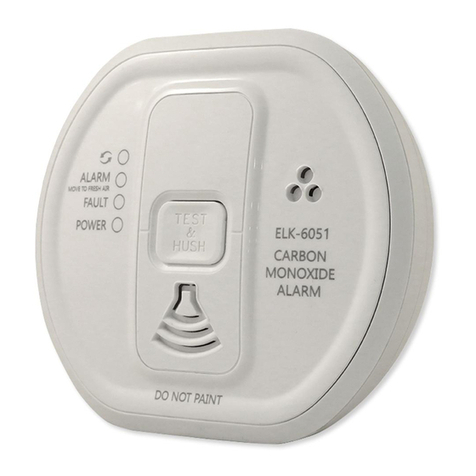
Elk
Elk ELK-6051 instructions
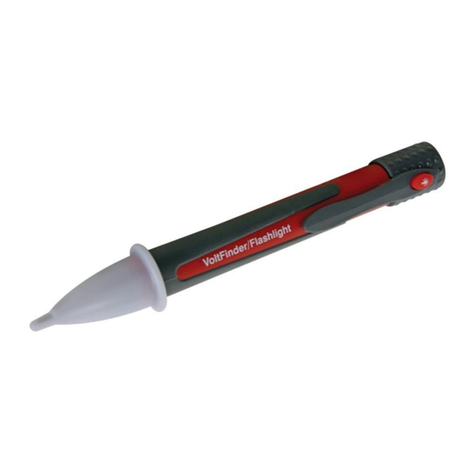
Velleman
Velleman VTTEST18 user manual
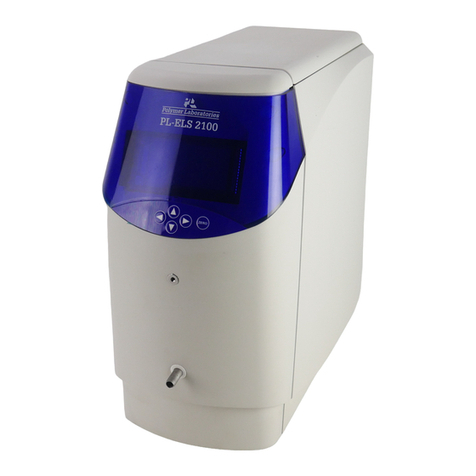
Polymer Laboratories
Polymer Laboratories PL-ELS 2100 Service manual
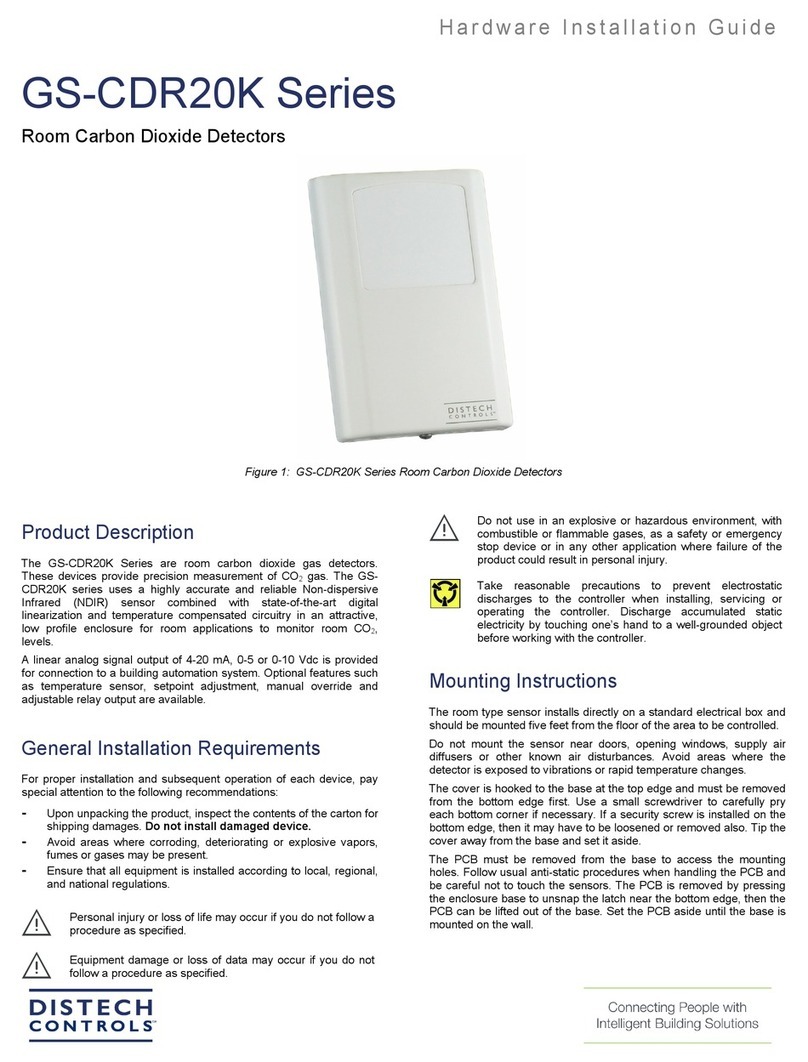
Distech Controls
Distech Controls GS-CDR20K Series Hardware installation guide
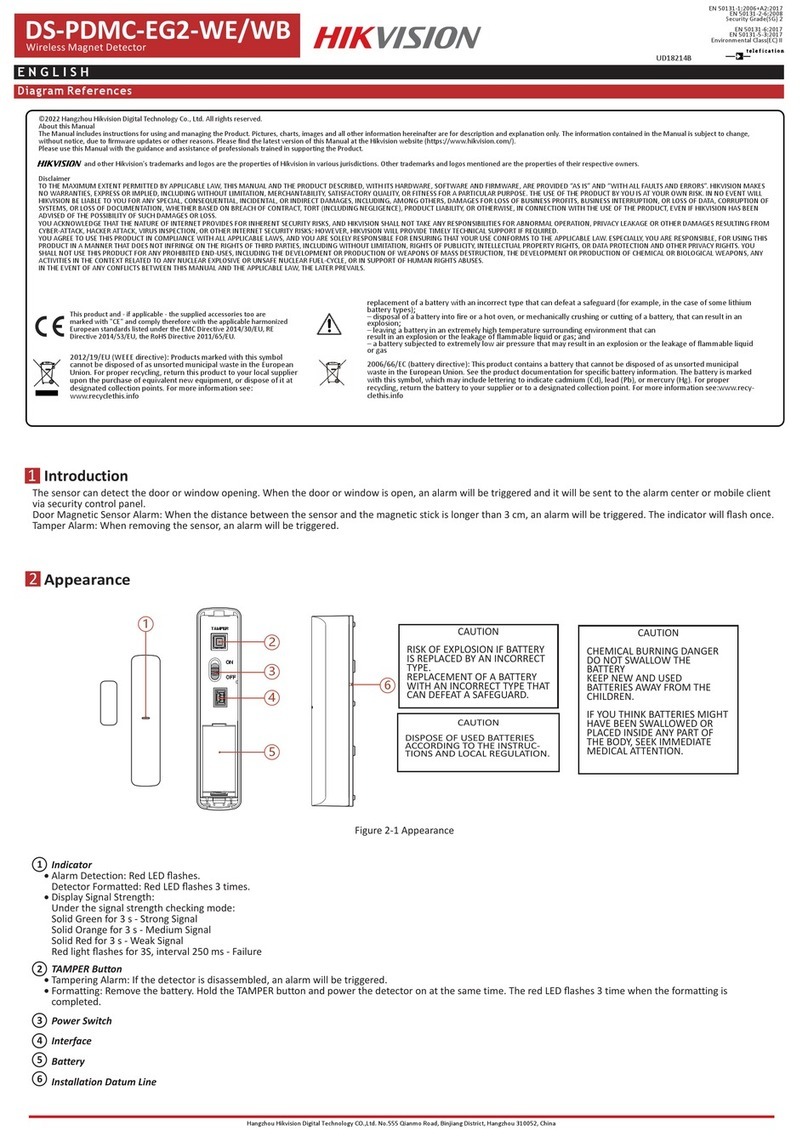
HIK VISION
HIK VISION DS-PDMC-EG2-WE quick start guide
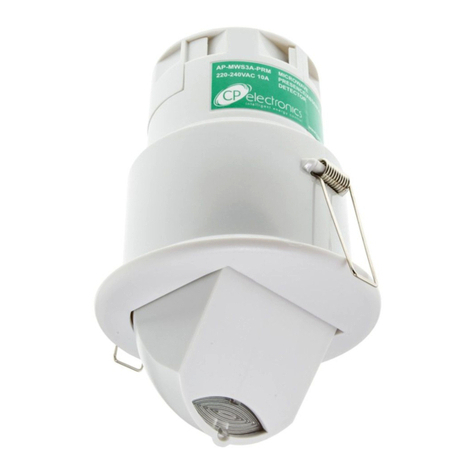
C.P. Electronics
C.P. Electronics MWS3A-PRM-2CH installation guide
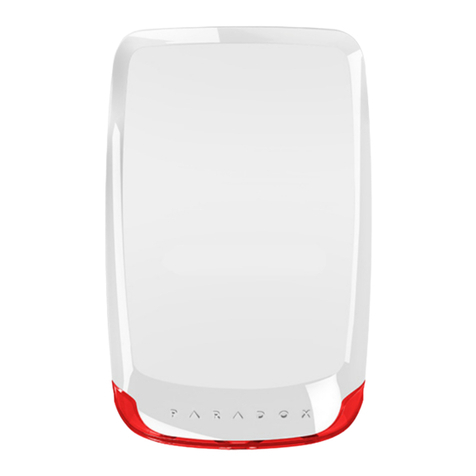
Paradox
Paradox SR230 installation manual
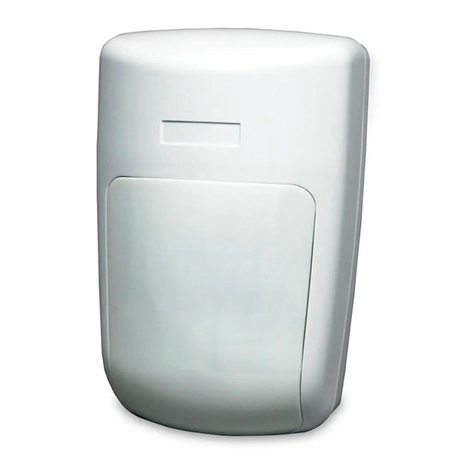
Resolution
Resolution CryptiX RE110P install guide

HIK VISION
HIK VISION Door Station quick start guide

HIK VISION
HIK VISION DS-PDBG8-EG2-WB user manual
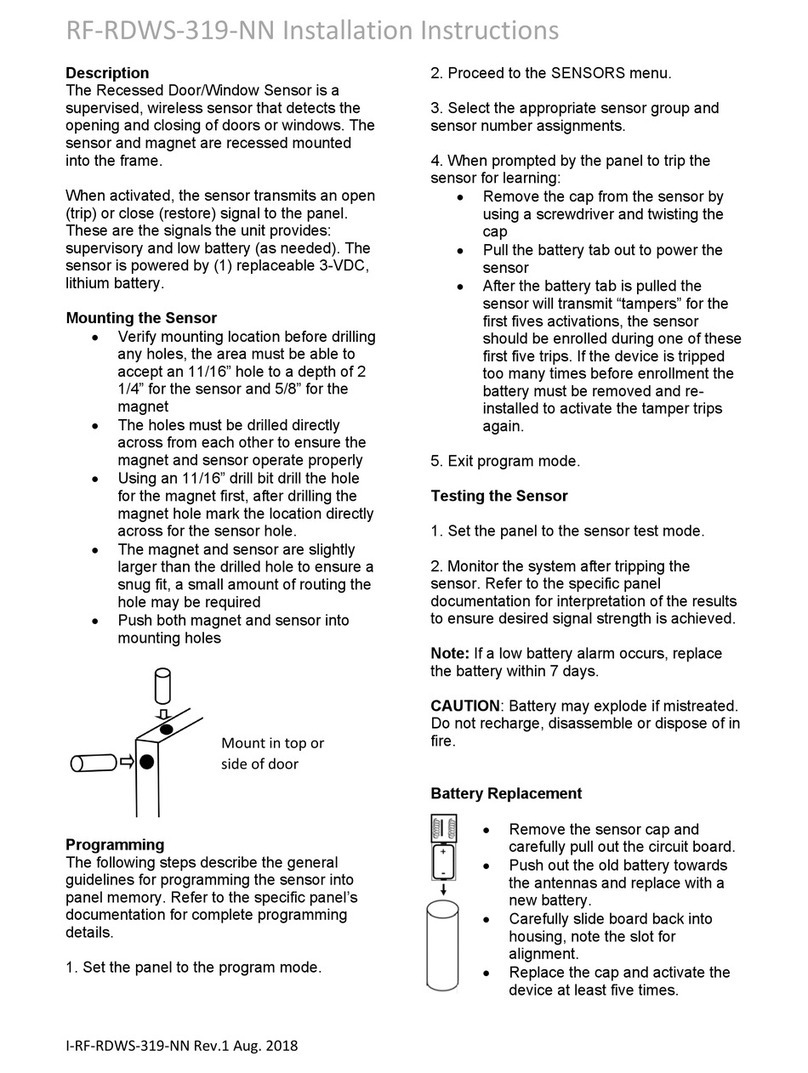
Maxouttech
Maxouttech RF-RDWS-319-NN installation instructions
